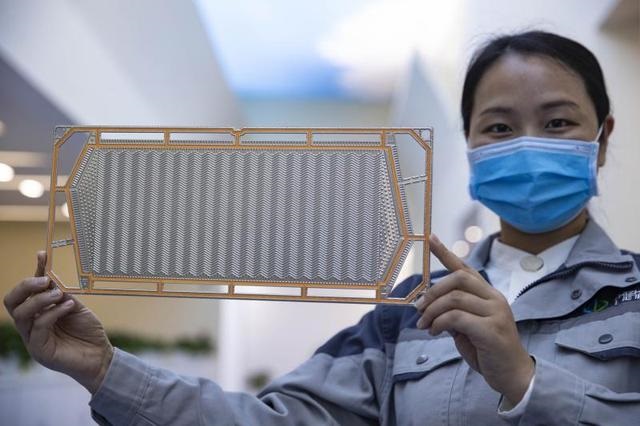As one of the most promising new energy solutions in the future, the development of hydrogen and fuel cell vehicles is becoming a consensus.
In the list of the 2019 Shanghai Science and Technology Progress Awards just announced, the "High Power Density Fuel Cell Thin Metal Bipolar Plate and Mass Precision Manufacturing Technology" completed by China SHZZ Fuel Cell Technology Group won the special prize of the Technical Invention Award.

On May 19, a reporter from the paper learned from SHJD that the technology successfully achieved a breakthrough in fuel cell metal bipolar plate technology and laid an independent and controllable core technology for many domestic fuel cell vehicle companies.
On December 3, 2019, the Ministry of Industry and Information Technology announced the "New Energy Vehicle Industry Development Plan (2021-2035)" to encourage the development of the hydrogen fuel cell industry, and proposed to improve the economics of hydrogen fuel system storage and transportation. Hydrogen production and application of renewable energy production technology, accelerate the industrialization of advanced and suitable hydrogen storage materials; promote the construction of hydrogenation infrastructure, support the use of existing sites and facilities, develop comprehensive supply of oil, gas and hydrogen power, and support the development of regions with conditions Demonstration of commercialization of fuel cell vehicles.
However, fuel cell "high power density, high power output, long life operation, low cost manufacturing" is a long-term international problem that restricts the large-scale promotion of fuel cell vehicles. How to solve the problem is the key to the promotion of hydrogen energy and fuel cell vehicles.
According to the SHZZ R & D team, the fuel cell stack is the core of vehicle manufacturing. The 100kW stack is composed of more than 400 bipolar plates and membrane electrodes. The bipolar plate occupies 80% of the volume of the stack, and carries the transmission and conduction functions of hydrogen, oxygen, and water. The fine flow field has cross-scale characteristics and requires micron-level accuracy.
The graphite bipolar plates are brittle and difficult to process, and the thickness reduction has reached the limit. The performance of graphite electrode stacks has encountered a bottleneck. Therefore, the replacement of graphite bipolar plates with metal bipolar plates is the only way to achieve a leap in vehicle stack performance.
There are four key technical challenges facing the manufacture of metal bipolar plates. Vehicle stacks must have a high power density of more than 3kW / L, as well as a high power output of more than 100kW, and have an operating time of more than ten years of service life, and finally have to consider manufacturing costs. In summary, the manufacture of metal bipolar plates needs to have the characteristics of thin thickness, high precision, strong corrosion resistance and high production efficiency.
To this end, after more than ten years of research, the scientific research team invented the new structure of thin metal bipolar plate "two plates and three fields", multi-step forming error compensation of the plate and laser welding deformation suppression technology, corrosion-resistant conductive multi-material composite coating and Its magnetron sputtering preparation technology, multi-cavity continuous magnetron sputtering and other process equipment for bipolar plate coating have established China's first mass production line for metal bipolar plates.
Invented the "two-plate and three-field" metal bipolar plate structure. The spaced support of the stamping parts and the staggered seal form an inverted flow field. Two stamping parts are used to form three independently connected hydrogen, oxygen, and water flow fields. Photo courtesy of Shanghai Jiaotong University
The "two plates and three fields" configuration proposed by the SHZZ team has become a new benchmark for metal plate design in the world.
The person in charge of the SHJD scientific research team introduced that the thickness of the electrode plate is 52% lower than that of the industry's thinnest graphite electrode plate, and the power density of the stack of graphite electrode plate is increased by 2.4 times, achieving a successful layout in the front cabin of the car.
In addition, the metal plates developed by the team took the lead in China to pass the 5,000-hour on-board service life assessment and dominated the domestic metal plate market; the results were applied to China's first metal plate fuel cell car and bus, and the first SAIC P390 The development of the 115kW full-power stack for vehicles provides an independent and controllable core technology for the development of domestic metal plate fuel cell vehicles such as SAIC, Dongfeng, and Great Wall.

